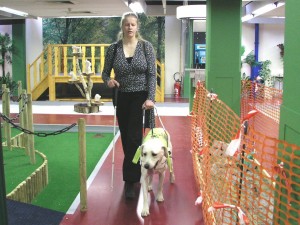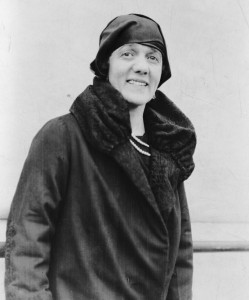 Dogs and humans have enjoyed a special relationship for thousands of years, from helping shepherds with their flocks to guarding the home, and of course, providing companionship. However, the unique bond between man and dog is perhaps best illustrated by the incredible freedom thousands of seeing dogs provide their visually impaired owners across the world.
Dogs and humans have enjoyed a special relationship for thousands of years, from helping shepherds with their flocks to guarding the home, and of course, providing companionship. However, the unique bond between man and dog is perhaps best illustrated by the incredible freedom thousands of seeing dogs provide their visually impaired owners across the world.
Here is a brief history of how guide dogs came to be.
No one is quite sure when a dog was first used to assist a human with poor sight, but there is historical evidence that it was a working practice many centuries ago, long before the existence of dog beds or any of the other modern products used today. In the ancient ruins of Herculaneum, a city destroyed alongside Pompeii by the erupting Vesuvius, historians have found murals dating from the first century AD, which seem to depict a blind man being led by a dog. Fast forward to the Middle Ages and there are wooden carvings appearing to chronicle the same practice. When this unique relationship between humans and dogs actually began we may never know, yet we can be sure that guide dogs, in some form or another, have been in existence for a very long time.
It was in the late 1700s that we have the first report of medical practitioners considering the use of guide dogs at the ‘Les Quinze-Vingts’ hospital in Paris, and it appears the idea spread quickly after that across Europe. In 1819, Johann Klein, the man who founded the Vienna Institute for the Education of the Blind, wrote about the potential for guide dogs, although it is not clear whether he ever put these concepts into action. One man who did set the practice into motion was Jakob Birrer, a Swiss national, whose 1847 journal recounts how he self-trained his dog to assist him. His story is quite remarkable, and it was all done without the modern harnesses and dog coats which are used in training today. While the formal training of guide dogs may not yet have been underway, the idea was clearly creating some buzz in Europe around this time, and the seeds had been planted for the birth of the modern guide dog movement.
As with many medical advances, it was the horrors of the First World War which led to a revolution in the use of seeing dogs. Quite by chance a German doctor, Gerhard Stalling, was walking with a blind patient on the grounds of a convalescent hospital when he was called away. As he went to attend to his business, he left his dog with the patient. Upon returning Stalling immediately knew that the dog had been able to assist the blind man in his absence. And so the idea was born. He set about exploring ways in which dogs could be of assistance to the blind, and in 1916 he opened the world’s first training school for guide dogs in Oldenburg. It was so successful that new schools quickly opened across Germany, training over 600 guide dogs a year. Although the centres eventually closed, the movement was quickly picked up and an even more efficient centre opened in Potsdam, an establishment capable of training more than twelve dogs each month.
 Up until this point, the wide-scale training of guide dogs had remained an exclusively European venture, but that was soon all to change. Dorothy Eustis, a wealthy American dog trainer working in Switzerland, heard of the schemes and in 1927 wrote an article about the schools for the Saturday Evening Post. Back in America the article came to the attention of Morris Frank, a young blind man, who quickly made contact with Eustis to see how he could come into ownership of one of these new breed of seeing dogs. At Eustis’s invitation, Frank journeyed to Switzerland and was trained to use his very own dog. When the pair returned across the Atlantic, Frank’s dog became the first specifically trained guide dog to set foot in the States.
Up until this point, the wide-scale training of guide dogs had remained an exclusively European venture, but that was soon all to change. Dorothy Eustis, a wealthy American dog trainer working in Switzerland, heard of the schemes and in 1927 wrote an article about the schools for the Saturday Evening Post. Back in America the article came to the attention of Morris Frank, a young blind man, who quickly made contact with Eustis to see how he could come into ownership of one of these new breed of seeing dogs. At Eustis’s invitation, Frank journeyed to Switzerland and was trained to use his very own dog. When the pair returned across the Atlantic, Frank’s dog became the first specifically trained guide dog to set foot in the States.
Encouraged by the initial success of the trainings, Eustis opened up further ‘Seeing Eye’ schools, first in Switzerland and then, in 1929, in the US. Shortly afterwards, two British women, Muriel Cooke and Rosamond Bond, contacted Eustis and sought her help in setting up a British school. By 1931 the first four British guide dogs had completed their training and the famous Guide Dogs for the Blind Association had been founded.
Today thousands of guide dogs are trained each year all across the globe, providing independence and a vastly improved quality of life for the visually impaired. Training is expensive and the charities responsible for this training are always in need of support. Why not find out more about your local guide dog school and see if you can help sustain this remarkable tradition?
Photo Credits
Blind person and guide dog – by Brailleliga – Wikimedia Creative Commons
Dorothy Harrison Eustis – George Grantham Bain Collection – Wikipedia Public Domain
Guest Author Bio
Thomas Clarke
Thomas is a freelance writer with a particular interest in animals and their interaction with humans, an interest which he developed whilst studying moral philosophy at the University of Oxford. He has written this article on behalf of DogsCorner.co.uk, an online community and shop for dog owners selling everything from dog beds and training aids, to dog coats and healthy snacks.
Recent Guest Author Articles:
- How Strong Business Training Translates Into Everyday Decision-Making
- New Career and Degree Paths for Educators Who Want to Make a Broader Impact
- Finding the Right Plumber in Portland: A Comprehensive Guide for Homeowners
- Why Choose Elara Caring for Jackson, MI Home Health Services?
- How I Turned Poetry into a Paycheck


Please Share Your Thoughts - Leave A Comment!